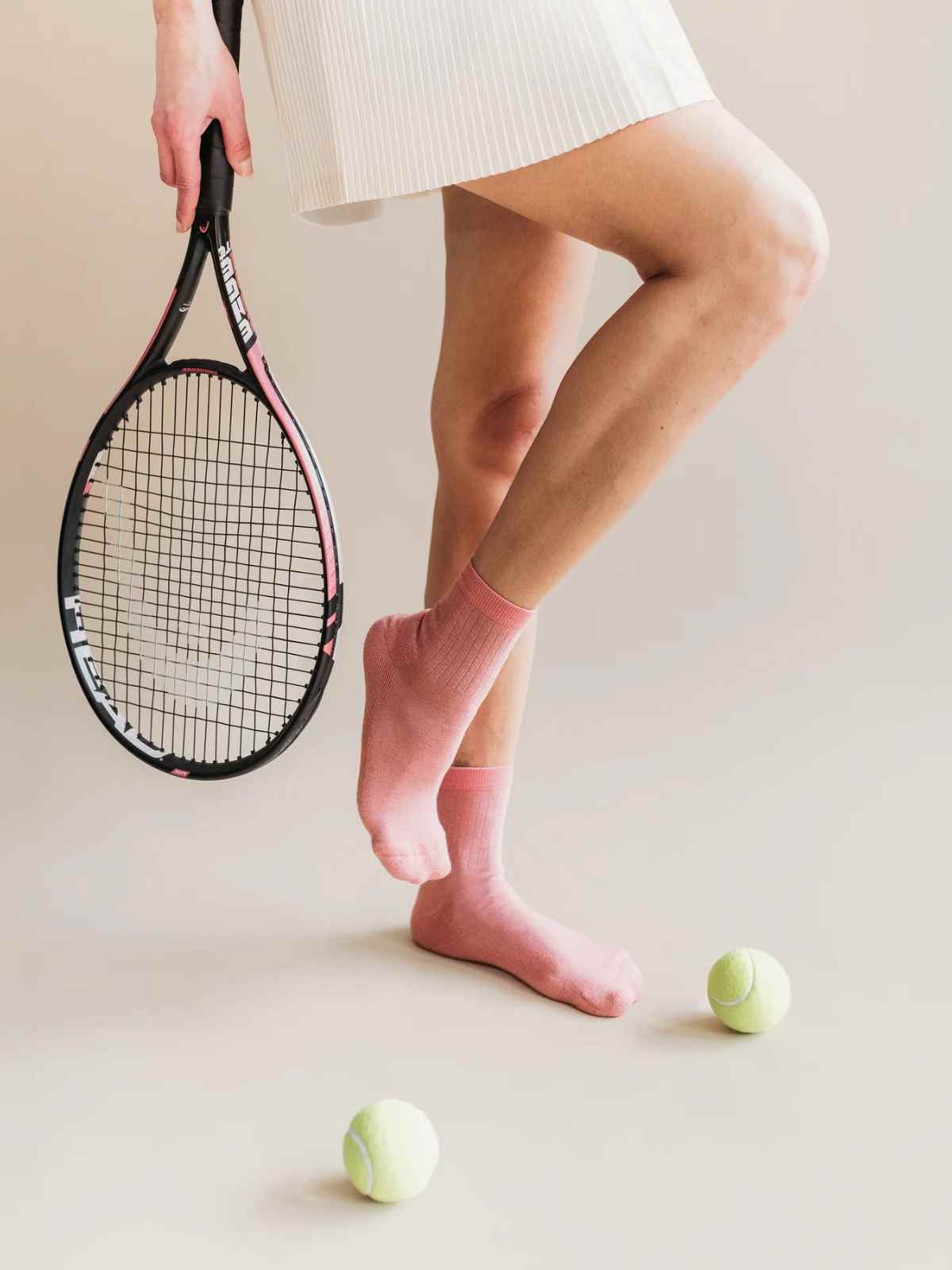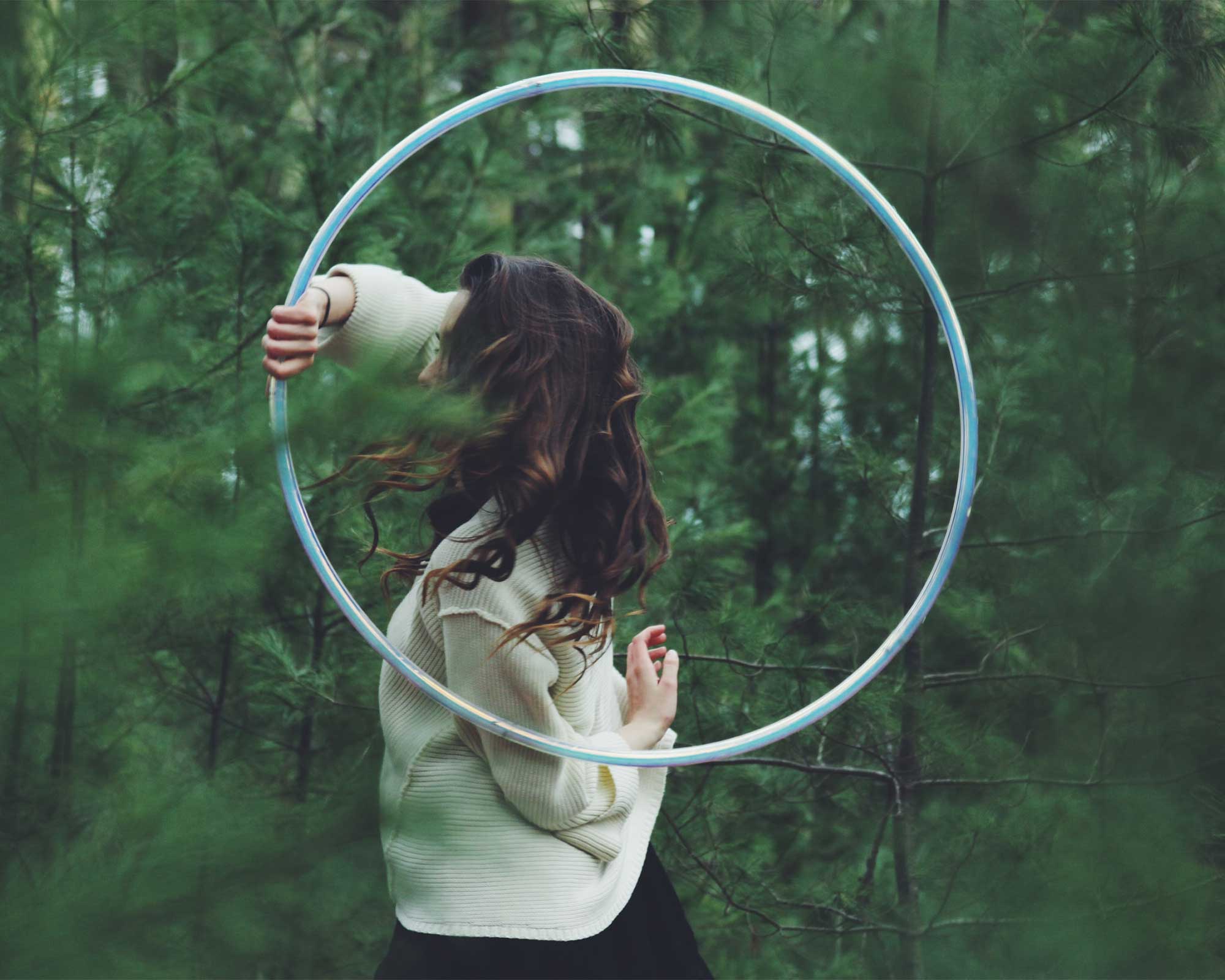Circular fashion ditches the linear take-make-waste model and instead asks the industry to close the loop on production, including responsible manufacturing, use, and end-of-life for every garment. It’s a big ask of the industry and a complex subject, so here, we’re breaking it down to help you understand circular fashion’s definition, where it’s at right now, and how we as consumers can play a part.
What does circular fashion mean?
Circular fashion is a system where the manufacture of an item and the end of its life are equally as important, as the aim is to prevent waste by intentionally designing items to be reusable, repairable, biodegradable and recyclable. The concept of circular fashion is broad and nuanced, but overall, it envisions the industry as an almost endless circle in which materials are kept in use for as long as possible. At the core of this concept is knowing where things come from, what they are made of, who made them, and being accountable for the overall lifecycle of our belongings.
Circular fashion is a system where the manufacture of an item and the end of its life are equally as important.
Circular fashion is the intersection of the circular economy (a model that exchanges the typical cycle of take-make-waste in favour of reusing and recycling as much as possible) and sustainable and ethical fashion. “Linear” economic and societal models lead to excess waste due to a lack of end-of-life solutions for products and a mindset that prioritises throwing items away over renewing them. But the linear model makes huge sums of money for fast fashion businesses that rely on a constant demand for new and cheap items that can be disposed of when they’re no longer on-trend.
Key points of circular fashion:
- Using less materials when producing individual items for increased recyclability
- Working to remove non-recyclable and polluting materials from the supply chain
- Recapturing everything, from garment offcuts to packaging, for reuse
- Ensuring use and reuse for as long as possible, including collection schemes and returning recycled materials to a “good as new” state
- Returning any unavoidable waste to nature safely
How circular fashion came to be
The term circular fashion was coined at a 2014 seminar in Sweden that focused on transitioning the fashion industry to a more circular model. This pivotal distinction between the overall concept of a circular economy and circularity in fashion came at a time when the industry was under serious scrutiny. Only a year before in 2013, the Rana Plaza clothing manufacturing complex in Bangladesh collapsed, killing over 1,000 workers and swiftly positioning fast fashion as an undesirable model for consumers to support.
A decade on from the seminar, support for more sustainable, ethical, and circular systems has increased significantly, with the concept of circular fashion having entered the wider lexicon. Today, a more responsible approach to garment production, including increased recycling, repairability and reusability, is at the forefront of many consumers’ minds.
The pivotal distinction between the overall concept of a circular economy and circularity in fashion came at a time when the industry was under serious scrutiny
In 2024, the questions for the fashion industry are less about what circularity actually means and more about how to transition to this system long-term. Does this convergence of more sustainable, circular models mean a whole new economic fashion system? And as consumers align with this model by buying less, owning items for longer, and being more specific in their choices, how much longer can the increasingly wasteful fast fashion business model survive?
The Ellen MacArthur Foundation—a champion of circularity and an excellent resource for in-depth learning on the subject—says: “Collaboration is key. Working with partners across the supply chain, securing buy-in from leaders and sharing knowledge creates the conditions for broader, industry-wide change. It’s time to step up the pace and scale of progress.”
Circularity as a buzzword
A side effect of greater consumer and business interest in circularity is that unfortunately, like so many other sustainability terms, it has been co-opted by greenwashing brands looking to entice customers with promises of responsible practices.
Take-back schemes, for instance, have been marketed as a contribution to circularity, but with many brands offering shopping discounts in return for old clothing, these programmes only perpetuate the linear overconsumption model. What’s more, the reality of these take-back schemes is that many of the clothes donated are not reused but dumped in the Global South. Greenpeace’s Poisoned Gifts report (2022) detailed the lack of integrity in so-called circular recycling and reuse schemes—in particular their transparency—reporting that: “While these exported used clothes and even brand new “overproduced” clothes are mostly reported and recorded as “reused”, in fact nearly half of them end up in dumpsites, rivers or are burnt in the open.”
And there are few better examples of corporate companies greenwashing the concept than the case of ultra fast fashion giant Shein claiming it was on the road to becoming a leader in circularity by reducing textile waste. In 2023, the brand announced that it would partner with software service Queen of Raw to source deadstock fabrics from around the world and redirect them to its factories, where they’ll be used in its designs. To be clear, creating more garments, whether from excess fabrics or not, does not support the shift to a circular fashion model. The brand’s press release demonstrates just how far there is to go for the fast fashion industry to truly comprehend what a circular industry looks like, and how to get there.
The new legislation enabling circular fashion
In recent years, governments around the world have begun to surface bills and guidance aimed at bettering the fashion industry for all. This is a welcome change in an industry that has gone largely unregulated for so long that it has become toxic (sometimes literally). In fact, many experts now believe that legislation is the only way to push the industry to transition to a better, more circular model.
The European Union, in particular, is taking significant action. It has already banned the destruction of unsold clothing and footwear, and intends to introduce digital product passports that will “enable sharing of key product-related information that is essential for products’ sustainability and circularity.” Disclosure of a product’s sustainability credentials will be mandated on its label or packaging, which includes information about component materials, manufacturing processes, and end-of-life management.
The digital product passport is part of a wider Ecodesign for Sustainable Products Regulation, which has a key aim to “significantly improve [products’] circularity, energy performance and other environmental sustainability aspects.”
While this is all good news, the reality is that unless stricter and more radical legislation is proposed on a global scale, we won’t see the vast changes that are needed to move the fashion industry to a fully circular model which is, after all, a big ask for an industry built on linear consumption.

Tips for taking a circular approach to fashion
While legislation will help push circularity forward on a larger, business scale, consumers also play a key role in implementing circular fashion on an individual level. With many brands now offering recycling programs, councils introducing textile recycling, and thrift shops abounding, there are so many ways to avoid sending clothes to landfill, reduce the number of new garments we buy, and conserve what we already own.
Things you can do to align with circular fashion:
- Support more sustainable and ethical fashion.
- Learn more about the brands you buy from using Good On You’s directory.
- Live by the five r’s of fashion.
- Buy less and buy better.
- Revise your wardrobe before buying new.
- Shop second-hand where possible.
- Consider renting clothes for your next event.
- Host and attend clothes swaps.
- Take care of your clothes.
- Question “What are the alternatives?” before throwing away used clothing.
- Recycle your clothes through a credible programme instead of throwing them away.
- Choose more sustainable materials when purchasing new clothing.
- Talk to people about the benefits of circular fashion.
- Call on brands to increase their sustainability commitments and move to a circular model.
- Commit to not buying brands that don’t sit within the circular model.
- Keep learning about the impact our clothing has on the planet, and the importance of where and how your clothes are made.
Circular and sustainable fashion have brought a wave of greater consumer knowledge, powerful advocacy, and overall understanding that linear approaches to fashion can’t continue. Although we are a long way from a completely circular model in fashion, as more brands and consumers shift towards it and governments introduce legislation, we’re taking a step in the right direction.


















